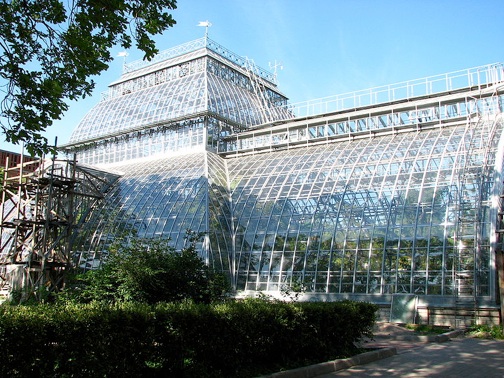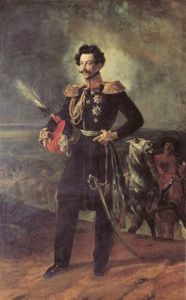HOMEPAGE | ATLAS & PHOTOGALLERY | EUROPEAN COLLECTIONS | HORTICULTURE | PROTECTION (cz) | CONTACTS | CZECH HOMEPAGE

HOMEPAGE | ATLAS & PHOTOGALLERY | EUROPEAN COLLECTIONS | HORTICULTURE | PROTECTION (cz) | CONTACTS | CZECH HOMEPAGE

Czech Cycads

Cycads in Russia
St. Petersburg's Botanical Garden is one of the oldest Botanical Gardens in the country. The Garden was founded in 1714 by order of Peter the Great. This text is under construction.
St. Petersburg Botanical Garden
Botanical Garden of the V. L. Komarov Institute of the Russian Academy of Sciences

The list of Cycads in Petersburg (2010)
Substantial part of the collection was destroyed during the WWII.
Cycadaceae
Cycas circinalis L.
1886 St. Petersburg, a private collection of Count Durnovo
1964 seeds, Bogor Botanical Garden
1972 seeds, Vietnam expedition BIN
Fine specimens from before the war, the St. Petersburg Botanical Garden
Cycas balansae Warb.
1998, seeds, Vietnam, the expedition BIN
Cycas brachicantha K. D. Hill
1998, seeds, Vietnam Expedition BIN
Cycas elonga (Leandi) DYWang
1957 China expedition BIN
Cycas media R.Br.
1957 seeds, China expedition BIN
1966 seeds, Hamburg Botanical Garden
1968 seeds Melbourne, Australia, Botanical Garden
1977 seeds Islands Pacific Expedition BIN
Cycas micholitzii Dyer
1981, the plant, Vietnam (Dalat) Expedition BIN
1993 Fine BIN
Cycas miquelii Warb.
1987 plant, Vietnam Expedition BIN
Cycas revoluta Thunb.
1888
1952 seeds, Lisbon
1946 plant, Sukhumi Botanical Garden
Fine pre-war instance, the St. Petersburg Botanical Garden
Cycas rumphii Miq.
1964 seeds, Bogor Botanical Garden
Cycas thouarsii R.Br. ex Gaudich.
1992 Guinea Expedition University
Cycas tonkinensis (Lindl. et Rodrigas) A. Chek
1998, seeds, Vietnam Expedition BIN
Stangeriaceae
Stangeria eriopus (Kuntze) Baill.
1997 , Plant, St. Petersburg, Botanical Garden of the University
From the pre-war collection, the St. Petersburg Botanical Garden
Fine in 1993, the St. Petersburg Botanical Garden
Zamiaceae
Ceratozamia kuesteriana Regel
1931 Tsarskoe Selo, greenhouses Count Durnovo
Ceratozamia mexicana Miq.
1963 Cluj. Botanical garden
1985 Graz Botanical Garden
Ceratozamia miquelliana H. Wendl.
1997 Petersburg Botanical Garden University
Ceratozamia norstogii D. W. Stev.
1997 Germany, private collection
Dioon edule Lindl.
1986 Sukhumi Botanical Garden
Dioon rzedowskii De Luca, A. Moretti, Sabato & Vazq. Torr.
1997 Germany, private collection
Dioon spinulosum Dyer ex Eichl.
2002 Moscow, MSU
Encephalartos altensteinii Lehm.
1931, the plant, Tsarskoe Selo, greenhouses Box Durnovo
1959 seeds, Melbourne
Encephalartos ferox G. Bertol.
1979 Mozambique Bot.sad University
Encephalartos hildebrandtii A. Br. & C. D. Bouche
1997 Germany, private collection
2000 Moscow GBS
Encephalartos lehmannii Lehm.
1967 Hamburg Botanical Garden
Encephalartos longifolius (Jacq.) Lehm.
1995 Germany bot.sad University
1997 Germany, private collection
Encephalartos sclavoi De Luca, DWStev. & Moretti
1997 Germany Private collection
Encephalartos septentrionalis Schweinf. ex Eichl.
1997 Germany, private collection
Encephalartos transvenosus Stapf. & Burtt Davy
1997 Germany, private collection
Encephalartos trispinosus (Hook.) RA Dyer
1967 Germany Bot. Garden University
Encephalartos whitelockii PJH Hurter
1997 Germany, private collection
Lepidozamia peroffskiana Regel
1967 Hamburg Botanical Garden
1975 Australia Botanical Garden (charges in nature)
Macrozamia fawcettii C. Moore
1997 Germany, private collection
Macrozamia lucida LASJohnson
1997 Germany, private collection
Macrozamia miquelii (F. Muell.) A.DC.
1997 Germany, private collection
Macrozamia moorei F. Muell. cv. Blue Form
1997 Germany, private collection
Macrozamia riedlei (Fisch. ex Gaudich.) CFGardn.
1967 Canberra Botanic Gardens
1997 Germany, private collection
Microcycas calacoma (Miq.) A. DC
1965 Cuba Botanical Garden
Zamia fischeri Miq. ex Lem.
1997 Germany, private collection
Zamia muricata Willd.
1997 Germany, private collection
Zamia furfuracea Aiton
2004 Ltd. Flora International,
Zamia integrifolia Lf
1983 U.S. Botanic Garden
Zamia latifolia Lodd.
Zamia muricata Willd.
1997 Germany, private collection

Zamia katzeriana (formerly splendens) was named after the gardener master Katzer in Petersburg. The species was described by the German Rettig (Rettig, E. 1896. Die Cycadeen des Botanischen Gartens in Peterburg. Gartenflora 45: 148–149.).
Cycads in Europe and Elsewhere
Czech Republic (CZ) - Belgium (CZ) - Cuba (EN) - Denmark (EN) - Ireland (EN) - Netherlands (EN) - Poland (EN) - Portugal (EN) - Russia (EN) - Slovakia (EN) - Sweden (EN)
Katzer, Perovsky and Küster
The Russian count and benefactor Perovsky, German baron Küster and Austrian born gardener Katzer are the three historical persons related to Russia. After them the following cycads were named Lepidozamia peroffskyana, Ceratozamia kuesteriana and Zamia katzeriana.

The Austrian Franz Katzer was born in October 1830. He came to Russia in 1856 and became a "gardener master" in Pavlovsk Imperial Garden, the Russian emperors residence near Saint Petersburg. He started using a Russian name Franz Karlovich Katzer (where Karl was his father's name). He was not just an ordinary gardener but had a good reputation as he became the founder-member of the Russian Imperial Society of Horticulture (St. Petersburg).
During the Russian Turkish war in 1877 he was known to sell flowers and donate the money to the soldiers hurt in the war. For this he was held in high esteem by the empress Maria Alexandrovna. He received several orders and medals given to him, including the St. Anna imperial order of second degree as well as his memberships in commissions, societies etc.
He died in February 1912. We do not know where he died but most probably in Russia as we could find a mention of his candidacy to a post to a Garden society as late as in 1911. We also know there was his necrolog published in Russia in 1912.
The house register in Petersburg mentions the names of the people living with Katzer in his house, incl. Varvara Ivanovna Katzera, most probably his Russian wife as well as his son Rudolf and daughter Maria.
His son Rudolf continued to live in Russia and was an important "Garden Master" too, who projected several big gardens in Petersburg as well as the design of Kazan square seen on the historic photo bellow.
From: Vesenina N.N. "Sadoviy master R.F. Karzer", in: Pamyatniki istorii i kulturi S-Peterburga. No. 8. St.Peterburg, 2005. s. 249-273
Baron Karl von KÜSTER (Kuester or in Russian: КИСТЕР)
July 21, 1820, Germany - December 2, 1893
In 1850 he came to work to the St. Petersburg. In 1855-56 he became its superintendent? (zaveduyuschi) and in between 1856-59 he was its administrative director. Ceratozamia kuesteriana was named after him.
K.(Baron) Kuster: Katalog rasteniyam Botanicheskago Sada. [Catalogue of the living plants which were till the year 1856 in the Imperial Botanical Garden]. Id. 1857
Vasily Alekseevich PEROVSKY

After studying in Moscow University, he joined the emperor's retinue in 1811. When retreating toward Moscow after the Battle of Borodino, he was taken prisoner by the French, and remained in captivity until the fall of Paris in 1814.
He was heavily wounded in the 1828 war with Turkey.
In 1833 Perovsky was appointed the military governor of Orenburg. In 1839, he led an invasion of the Khanate of Khiva, in name to free the slaves captured and sold by Turkmen raiders from the Russian frontiers on the Caspian Sea, but also as an attempt to extend the Russian borders while the British Empire entangled itself in the First Anglo-Afghan War in 1839. Perovsky's expeditionary force consisted of 5,200 infantry, and 10,000 camels. Due to poor planning and a bit of bad luck, they set off in November 1839, into one of the worst winters in memory, and were forced to turn back on 1 February 1840. The expeditionary force arrived back into Orenburg in May, having suffered over 1,000 casualties without firing a single shot.
In 1842, Perovsky left the Orenburg governor's position, but was brought back to that office in 1851. This time, his campaigning in the central Asia (today's central Kazakhstan) against the Khanates of Khiva and Kokand was much more successful. After the successful taking of the Kokand fortress of Ak-Mechet by his troops in 1853, the fort was renamed Fort-Perovsky after him. His military successes forced the Khanate of Khiva to sign the 1854 treaty with the Russia Empire beneficial for the latter.
For his achievements, he was made a count in 1855.